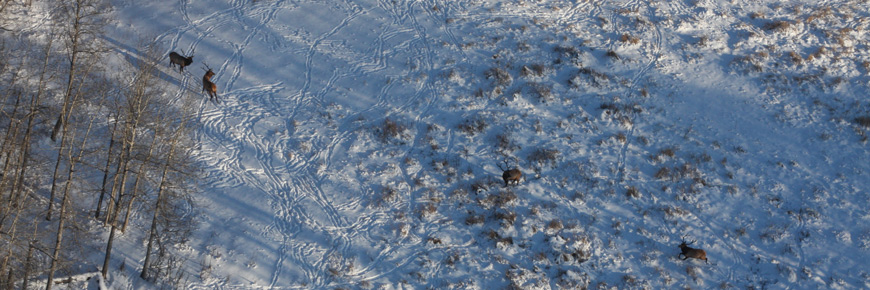
Ungulate population survey
Elk Island National Park
Elk Island is the only completely fenced national park in Canada. While this fence is effective in protecting the park’s bison from outside diseases and eliminating negative bison encounters with neighbors outside the park, the fence also greatly impacts the natural migration patterns of large hoofed animals, or ungulates. The fence also reduces the number of large predators within the park. These disruptions to natural ecological processes means that ungulate populations can grow to exceed the carrying capacity of the park. Protecting bison, elk, and moose in Elk Island National Park is a balancing act to ensure that populations do not become too big or too small.
Elk Island protects herds of disease free plains bison and wood bison. These animals support bison conservation projects around the world. If the populations of animals in the park dip too low, the population may crash. To avoid this, the population must stay above what is called the minimum viable population.
To keep an eye on ungulate populations, helicopters are used to count the number of bison, elk, moose, and deer. Aerial surveys are completed each winter because the white background of snow and the lack of leaves on trees makes it easier to see animals. Survey data is used to plan active management strategies to maintain ungulate populations within a target range.
- Date modified :